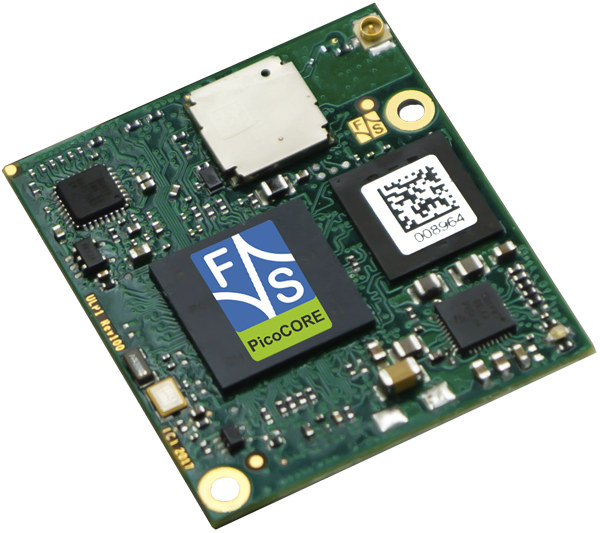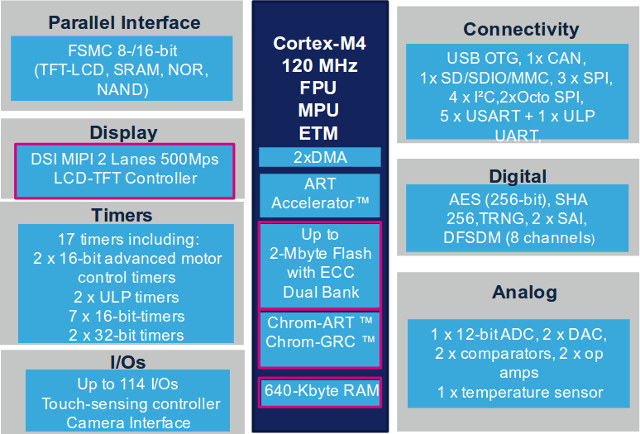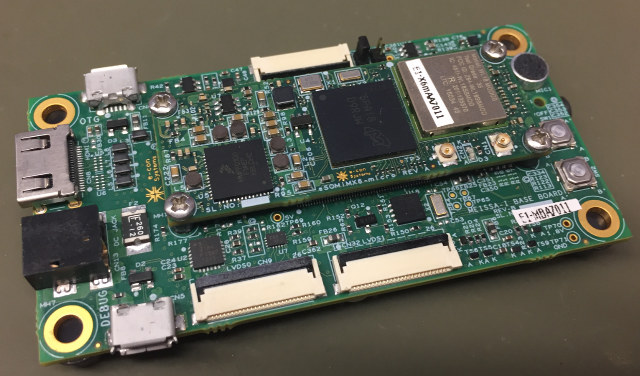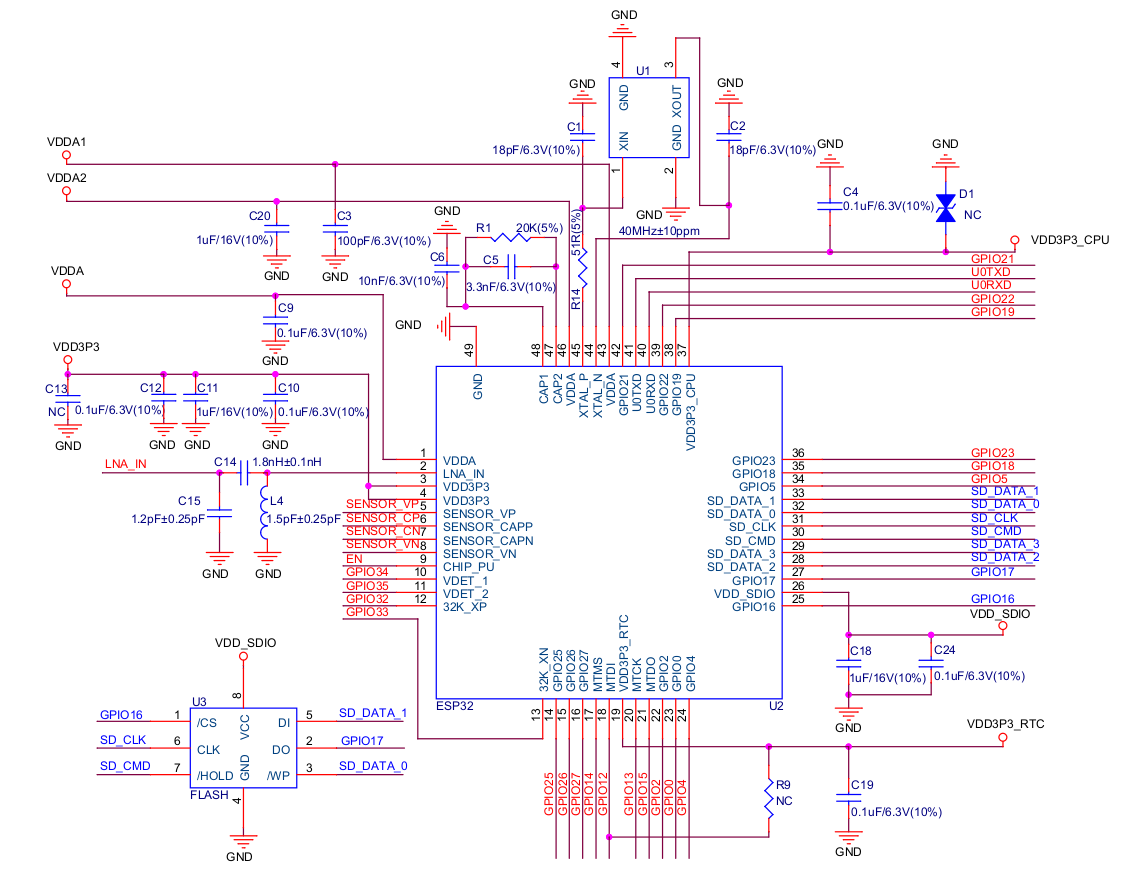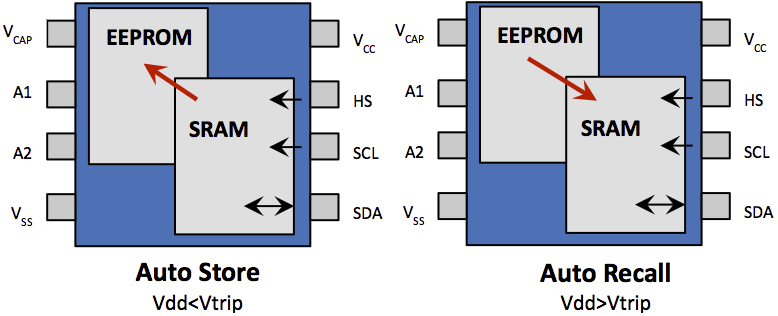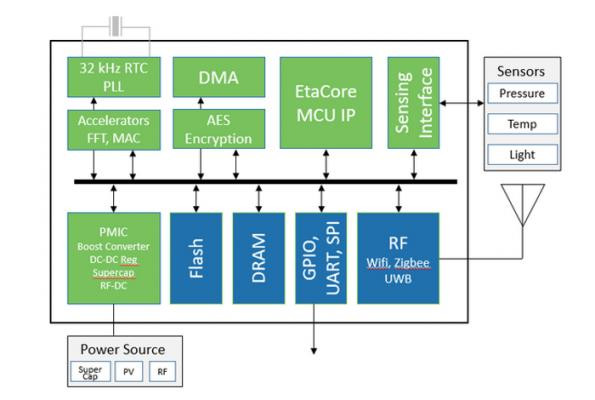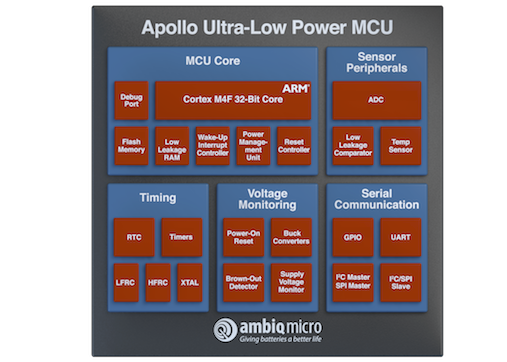NXP unveiled another variant of their i.MX 7 Cortex A7 processor last year, and I missed it. NXP i.MX 7ULP offers many of the same features as i.MX 7, but is manufactured using FD-SOI (Fully Depleted Silicon On Insulator) process technology to offer lower power consumption, as low as 15 mW or less in deep sleep, or 17 times less in comparison to i.MX 7 devices, while the dynamic power efficiency is improved by 50 percent on the real time domain (Cortex-M4). I found out about it thanks to an email from F&S Elektronik Systeme about the introduction of their PicoCORE MX7ULP module – based on i.MX 7ULP processor – at the Embedded World 2018 conference. PicoCORE MX7ULP CoM specifications: SoC – NXP i.MX 7ULP Arm Cortex-A7 processor @ up to 800 MHz, with Arm Cortex-M4 real-time core, and 2D/3D graphics accelerator System Memory – Up to 1GB LPDDR3 Storage […]
STMicro Introduces Ultra-efficient STM32L4+ Series MCUs with Better Performance, Chrom-GRC Graphics Controller
STMicroelectronics has announced an upgrade to their STM32L4 series Cortex-M4 micro-controllers with STM32L4+ series upping the maximum frequency from 80 MHz to 120 MHz delivering up to 150 DMIPS (233 ULPMark-CP) , and ultra low power consumption as long as 33 nA in shutdown mode without RTC. The new family also adds Chrom-GRC graphics controller (GFXMMU) that can handle both circular and square TFT LCD displays together with a MIPI DSI interface and displayer controller, making it ideal for wearables, Chrom-ART 2D accelerator for better graphics performance, two Octo SPI interfaces, and more memory (640KB max) and storage (up to 2MB flash). If you want to know all differences between STM32L4 and STM32L4+, and/or learn how to use peripherals, STMicro has setup a nice free STM32L4+ online training page, which allow you to do just that either by downloading PDF documents, or following e-Presentations with slides and audio. STM32L4+ appears […]
Save Power, Hibernate Your Embedded Linux System
This is a guest post by Tharma Rajan G, Project Lead, e-con Sytems. What is the best way to save power consumption of your embedded Linux system? Is there any way to save max power and resume operation ? Yes. It is ‘hibernate’ mode, one of the Power Modes in Linux. This article talks about how we utilized this ‘hibernate mode’ in our Reference Platform Kit Meissa-I with eSOMiMX6-micro SOM. Meissa-I is a dual board solution that features eSOMiMX6-micro Computer on Module & carrier board. Meissa-I development board runs Linux and Android Marshmallow (under development). eSOMiMX6-micro is based on Dual/Quad core ARM CortexTM-A9 based CPU @ 800MHz/Core. It has 1GB LPDDR2 and 4GB eMMC FLASH (expandable upto 32GB). The eSOMiMX6-micro module also has the Wireless LAN and Bluetooth module. Linux Power Modes Power Management is a key feature in embedded Linux system and there are two types for implementing the […]
ESP32-PICO-D4 System-in-Package Combines ESP32, 4MB SPI Flash, a Crystal Oscillator, and Passive Components
Espressif Systems has revealed another ESP32 variant, but this time it’s not an SoC, but a 7x7mm system-in-package (SIP) that comes ESP32 dual core processor, a 4MB SPI flash, a crystal oscillator and various passive components, so that you don’t need to include those in your design, and create an ultra-compact PCB for wearables and other space-constrained applications. ESP32-PICO-D4 SiP specifications: SoC – ESP32 with two Tensilica LX6 cores, 448 KB ROM, 520 KB SRAM (inc. 8KB RTC memory), 1kbit eFuse On-module Flash – 4MB SPI flash Connectivity WiFi – 802.11 b/g/n/e/i (802.11n up to 150 Mbps) Bluetooth – Bluetooth V4.2 BR/EDR and BLE specification; ; class-1, class-2 and class-3 transmitter; Audio: CVSD and SBC SIP Interfaces SD card, UART, SPI, SDIO, LED PWM, Motor PWM, I2S, I2C, IR GPIO, capacitive touch sensor, ADC, DAC, LNA pre-amplifier Sensors – On-chip Hall sensor & temperature sensor Clock – On-module 40 MHz crystal […]
Microchip EERAM Combines SRAM and Backup EEPROM into a Single Chip
Most micro-controllers comes with both SRAM volatile memory, and flash or EEPROM for non-volatile (persistent) memory, but Texas Instruments – and other companies – have been selling MCUs with FRAM (Ferroelectric Random Access Memory) and standalone FRAM chip, a non-volatile memory that delivers performance and power efficiency similar to SRAM, and much better endurance that either flash or EEPROM. You don’t see FRAM in that many MCUs and solutions, because it’s more expensive than having SRAM + flash, but some applications requiring ultra low power consumption and non-volatile storage write capabilities may benefit from the technology. Those include data logging, sensor networks, and batteryless applications. Microchip has also it own technology with EERAM, a non-volatile SRAM memory that includes a “shadow” EEPROM used to automatically backup data on power down with a small external capacitor providing enough power to save SRAM to the EEPROM. Once power is recovered (Vdd > […]
EtaCore ARM Cortex M3 Core Operates at Low Voltage (0.25V and up) for Higher Power Efficiency
We’ve previously seen Ambiq Micro offering Apollo ARM Cortex M4F MCU with Cortex M0+ energy efficiency, and later the upgraded Apollo 2 MCU with even lower power consumption and better performance. The company can achieve such efficiency thanks to low sub-thresold operating voltage in the 0 to 0.5V range. Another startup – Eta Compute – is now offering another low voltage solution with their EtaCore ARM Cortex M3 IP, and other IP blocks operating at low voltage (0.25 to 1.2V). Eta Compute claims a “10x improvement in power efficiency over any alternative”, and battery life of over 10 years on a CR2032 coin cell. Their website does not provide that many details about the core and development tools, but still mentions the following: The only commercially available self-timed technology supporting dynamic voltage scaling (DVS) that is insensitive to process variations, inaccurate device models, and path delay variations Includes M0+ and […]
8Power Vibration Energy Harvesting Technology Powers Batteryless LPWAN GPS Trackers, MEMS Sensors
While IoT products usually promises one to 10 years battery life, they will be several billions of them, and ARM’s CEO even forecast one trillion IoT devices in the next 20 years. Recharging batteries at home may be fine, but imagine having to recharge or replace batteries on top of electric poles, inside walls, in remote locations, and other hard to reach places, considerable resources would have to be deployed just to replace or recharge battery every year or whenever the battery is close to being depleted. That’s why work on energy harvesting technology for batteryless devices may be so important, and 8Power is one of the companies working in the field through their vibration energy harvesting technology that is said to harvest up to 10x the power of competing devices under comparable condition thanks to the use of parametric resonance phenomenon. The company has recently announced their Track 100 family […]
Ambiq Micro Introduces Ultra-Low Power Apollo 2 Cortex-M4F MCU Consuming Less than 10 μA/MHz
Last year Ambiq Micro unveiled their Apollo Cortex-M4F MCU with Cortex M0+ energy efficiency thanks to operation in sub-threshold voltage (< 0.5 V), and the MCU is said found in Matrix Powerwatch, a fitness tracker powered by body heat that you never need to charge. The company has recently announced a new version of the micro-controller with Apollo 2 MCU with better maximum performance thanks to a higher maximum clock speed (48 MHz vs 24 MHz), and higher efficiency (10 μA/MHz vs 30 μA/MHz @ 3.3V). Apollo 2 MCU key features and specifications: Ultra-low supply current <10 μA/MHz executing from flash at 3.3 V <10 μA/MHz executing from RAM at 3.3 V ARM Cortex-M4 Processor up to 48 MHz with FPU, MMU, wake-up interrupt controller with 32 interrupts Ultra-low power memory Up to 1 MB of flash memory for code/data Up to 256 KB of low leakage RAM for code/data […]


